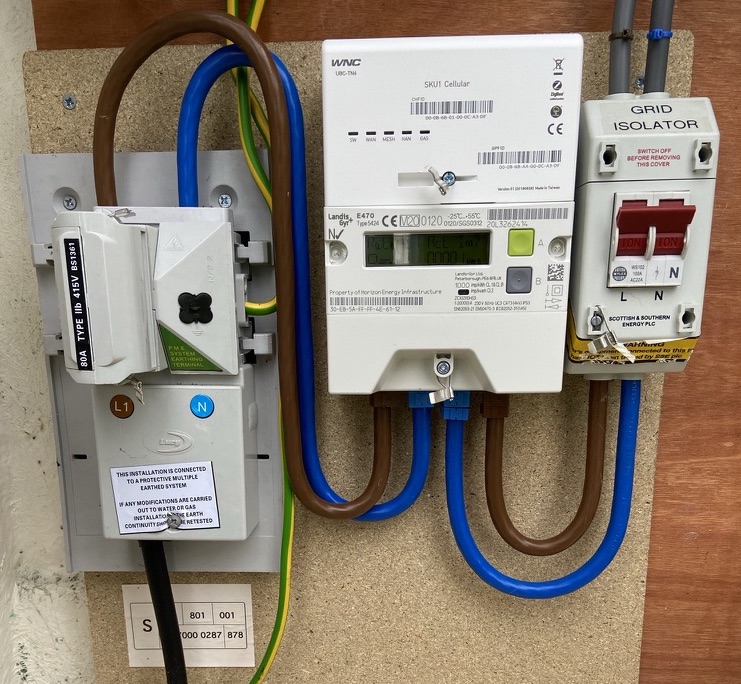When the solar panels on the House were commissioned in 2017, the UK’s Feed-In-Tariff (FIT) arrangement was still available so currently (2024-25 pricing) that system generates payments based on:
- 5.87p per kWh of Generation, as reported by the dedicated generation meter
- 7.14 p per kWh of Export, based on 50% of generation being treated as “deemed export”
When the new solar panels on the Outbuildings get commissioned later in 2025, those will not be eligible for any sort of FIT payments – but they will be able to generate revenue based on the actual exported energy, as reported by the SMETS2 Smart Meter.
Since the Smart Meter won’t be able to distinguish an export originating from the ‘new’ solar panels from one originating from the ‘old’ ones, it’s not possible to continue on the 50% “deemed export” basis for the older installation; the whole site needs to be switched to a tariff which makes payments based on actual, measured export.
The question then is whether it’s worth swapping over now, or waiting until the new panels are commissioned in about 6 months time – which depends on:
- The relative rates per kWh for a metered-export tariff versus the deemed-export tariff
- Whether the site is actually exporting (more than) 50% of generation or not
The electricity supplier is currently Octopus Energy, and the import tariff is Intelligent Octopus Go, which is very good for overnight EV charging. Octopus offer quite a wide range of export tariffs. The ‘best’ ones being:
- Octopus Outgoing, which pays a flat rate of 15p per kWh exported
- This is generally the best option for sites with no battery
- Octopus Outgoing Agile, which pays a variable rate based on half-hourly electricity prices
- This is generally preferred when there is a battery which can store a significant proportion of the solar PV generation during the middle of the day then export that in the early evening, when export prices are often (but not always) higher than 15p
On the face of it, 15p per kWh is significantly better than 7.14p per kWh, and spring-into-summer is generally very good for solar generation so a greater proportion of generated power is likely to be exported – which implies it would be beneficial to switch sooner rather than later, as long as Octopus Outgoing is compatible with Intelligent Octopus Go.

